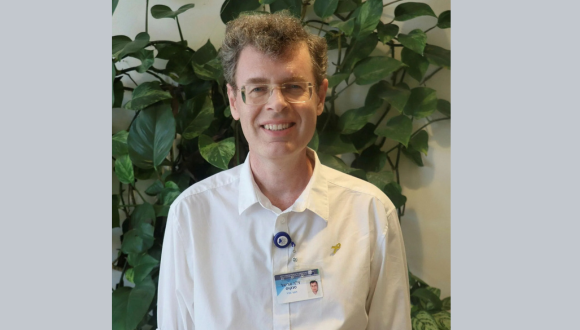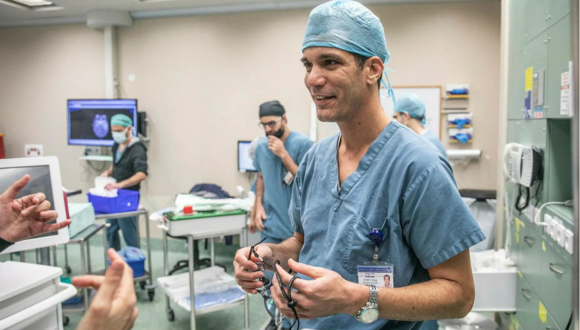
Loss of speech is among the most devastating consequences of paralysis. In conditions such as advanced ALS or after a stroke, patients may remain cognitively intact but unable to activate the organs of speech, trapped in silence despite a fully active mind. The new findings raise hope that such individuals may one day communicate again through brain-computer interfaces.
A Rare Glimpse into the Brain
The breakthrough was achieved during epilepsy surgery at Ichilov Hospital, where electrodes are implanted in the brain to locate the source of seizures. In this case, the epileptic focus was in the frontal lobe and hippocampus - regions also linked to speech production, perception, and imagined speech.
The research was led by Dr. Ariel Tankus of Tel Aviv University's Grey Faculty of Medical and Health Sciences and Sagol School of Neuroscience, together with Dr. Ido Strauss, Head of the Functional Neurosurgery Unit at Ichilov. Their study, supported by the Ministry of Innovation, Science and Technology, was published in Neurosurgery, the journal of the World Federation of Neurosurgical Societies.
"Fortunately, the patient agreed to participate in the experiment, which in the future may help paralysed individuals express themselves again through artificial speech," says Dr. Tankus.
From Thought to Sound
In the first stage, the patient was asked to vocalize two phonemes: /a/ ("ah") and /e/ ("eh"). Microelectrodes thinner than a human hair recorded the activity of individual brain cells as he spoke.
"The first stage of the experiment is essentially data collection in order to train the computer," explains Tankus. "Each microelectrode records information from a single cell, or at most two or three neighboring cells."
The recordings were used to train machine learning models to recognize the brain's electrical patterns for these sounds. In the next stage, the patient only imagined saying them. The computer decoded the activity and reproduced the corresponding sounds.

Electrode implantation surgery in the brain of a Parkinson's patient at Ichilov, this year. Photo: Eyal Toueg
A Unique Approach
Unlike other groups, the TAU-Ichilov team recorded from several distant regions of the brain rather than focusing on a single site.
"These are not the classic speech areas associated with activating the speech organs," notes Tankus. "They are connected to higher levels of speech - speech production, speech perception, and imagined speech. We expect that in the future, systems will integrate signals from multiple regions, achieving broader coverage of the brain's speech system."
The Global Race
Research into brain-computer interfaces is advancing quickly worldwide. In 2021, Stanford scientists reported a system that enabled a patient to "type" letters by thought, while a team at UCSF succeeded in translating brain signals into written words on a screen.
The TAU-Ichilov study marks the first time imagined speech has been converted into audible sound with high accuracy.
The Building Blocks of Language
For more than a decade, Dr. Tankus has focused his research on how speech is encoded and decoded at the single-cell level. Linking phonemes directly to brain cell activity is a historic first.
"We have, for the first time in history, succeeded in linking elements of speech to the activity of individual cells," says Dr. Tankus. "This allowed us to distinguish between the signals characteristic of /a/ and /e/."
The team is now expanding to additional sounds. "These are the building blocks of our language," Dr. Tankus adds. "Once we can connect them together, we will ultimately enable a person to produce words, and hopefully even sentences."

Dr. Ariel Tankus, leader of the study
Looking Ahead
The next phase is to decode fluent, continuous speech - spontaneous or from reading - directly from brain activity. The team is developing advanced artificial intelligence tools to predict phonemes and speech units in sequence.
"Our vision is that in the future, we will be able to train the computer on an ALS patient in the early stages, when speech is still intact," explains Dr. Tankus. "Later, when the disease progresses and the patient can no longer use the speech muscles, the system will still know how to translate their brain signals into words."
What began with two simple vowels now points toward a future where even those fully paralyzed may once again communicate freely - with their voices restored through the meeting of neuroscience and AI.

Dr. Ido Strauss, co-leader of the study. Photo: Tomer Appelbaum






